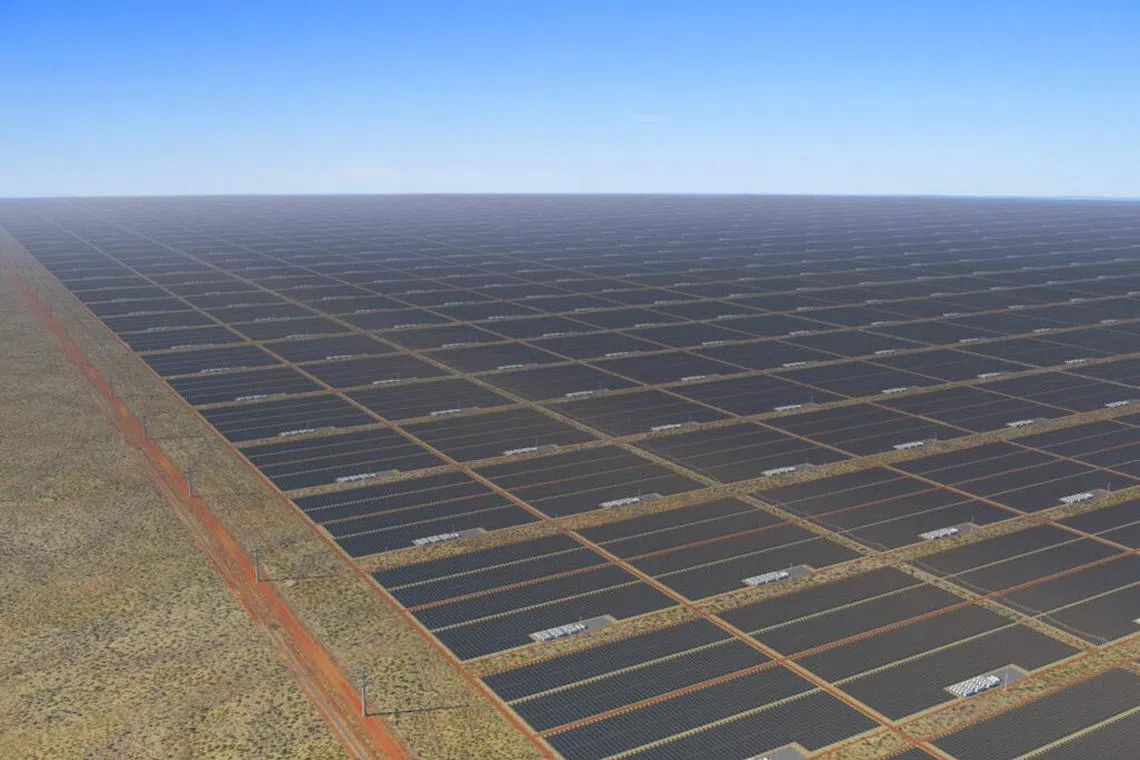Sun Cable’s Australia-to-Singapore solar plan no longer viable, says project’s billionaire investor
Sign up now: Get ST's newsletters delivered to your inbox

There has been widespread industry scepticism over the wild ambition of Sun Cable's plans.
PHOTO: SUNCABLE ENERGY
Follow topic:
Melbourne – Plans to use a 4,200km-long power cable to send clean energy from Australia to Singapore
A review of Singapore-based Sun Cable’s A$30 billion (S$27.5 billion) proposals concluded that the project should ditch an ambition to export electricity and focus instead on using a huge planned solar and battery facility to feed green industries at home, according to mining billionaire Andrew Forrest’s Squadron Energy unit, which holds a 25 per cent stake in the developer.
Sun Cable entered into voluntary administration last week
“Squadron Energy continues to believe in the vision for a game-changing solar and battery project in the Northern Territory’s Barkly region,” said Squadron chairman John Hartman. The unit – Australia’s biggest renewables developer – is focused on helping the country “become a green energy-exporting superpower by generating renewable energy to produce green hydrogen and green ammonia”.
There has been widespread industry scepticism over the wild ambition of the Sun Cable plans, which include proposals to build the world’s largest solar farm and a giant battery facility, and then to export electricity to Singapore via a high-voltage undersea cable that is more than five times longer than major existing connectors like the Norway-to-Britain North Sea Link.
Mr Forrest is seeking to transform his Fortescue Metals Group, a key global iron ore supplier, into a major producer of green metals and an exporter of clean hydrogen. Its subsidiary, Fortescue Future Industries, aims to start producing 15 million tonnes a year of green hydrogen from renewable generation by 2030. BLOOMBERG

